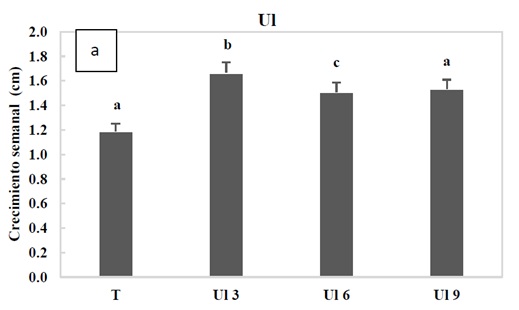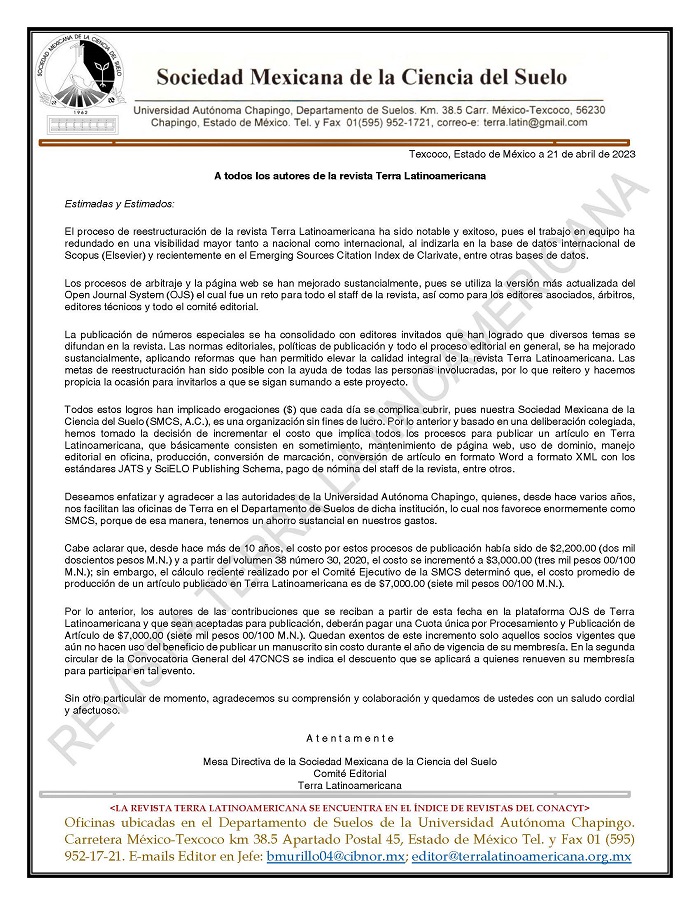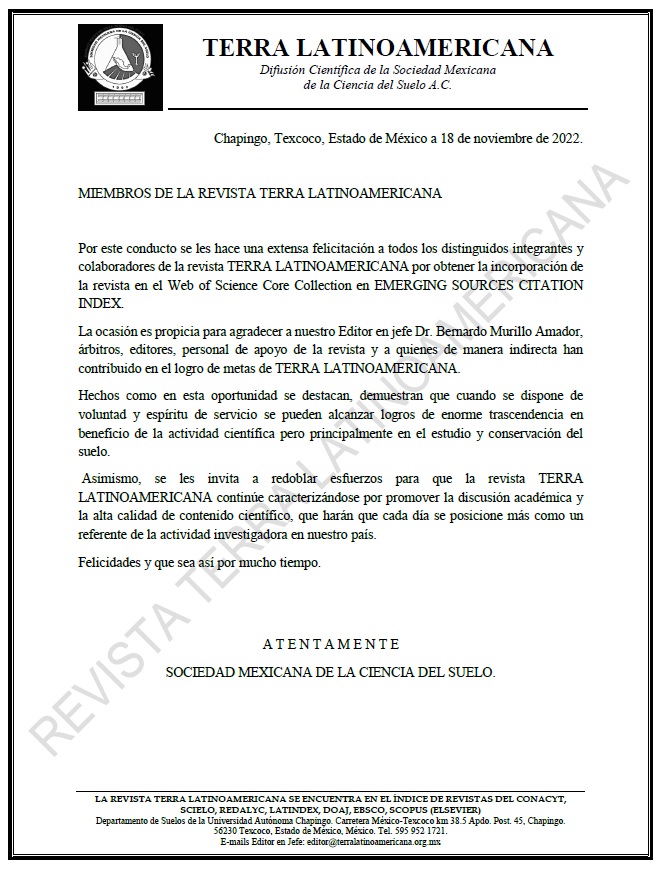Ef fect of Ulva lactuca and Gracilaria blodgettii Flours on the Physical and Chemical Properties of an Alkaline Soil and the Growth of Swiss Chard (Beta vulgaris var. cycla)
DOI:
https://doi.org/10.28940/terra.v43i.1895Keywords:
organic agriculture, seaweed, biofertilizer, fertility, natural resourceAbstract
The use of seaweed as biofertilizers has positive ef fects on the growth and development of various crops as well as on soil improvement. The purpose was to evaluate its ef fect on some physicochemical properties of an alkaline soil and on the growth of Beta vulgaris var. cycla (Swiss chard). In this study, flours of Ulva lactuca and Gracilaria blodgettii were used in a Vertisol soil. Three treatments were evaluated:
3, 6, and 9 g kg-1 of soil in 5 kg pots, and a control without flour. The bioassay was conducted in a greenhouse, with each treatment having five replicates. Bromatological and metal analyses were performed on both flours. The soil was analysed for texture, cation exchange capacity (CEC), organic matter (OM), relative humidity (RH), electrical conductivity (EC), pH, water retention capacity (WRC), Na, K, P, and N. In the Swiss chard, weekly and total growth, fresh and dry biomass were measured. The results indicated that both species increased OM content in the soil, with G. blodgettii being more notable from 1.48-2.7%. In contrast, U. lactuca modified the pH, reducing soil alkalinity from 9.01 to 7.47, increased CEC from 48.28 meq 100 g-1 to 48.72 meq 100 g-1, WRC from 90 to 92.8%, exchangeable sodium capacity from 98 to 100 mg kg-1, and potassium from 125 to 142 mg kg-1. The addition of U. lactuca flour was beneficial to the soil, allowing the growth of Swiss chard with significant increases in total height (P = 0.02621) and dry biomass (P = 0.007867). It is inferred that the total ash concentration in U. lactuca is related to the mineral content and its biofertilizer ef fect; however, additional research is required to determine the optimal concentrations in alkaline soils.
Downloads
Publication Facts
Reviewer profiles N/A
Author statements
- Academic society
- Terra Latinoamericana
- Publisher
- Mexican Society of Soil Science, C.A.

















